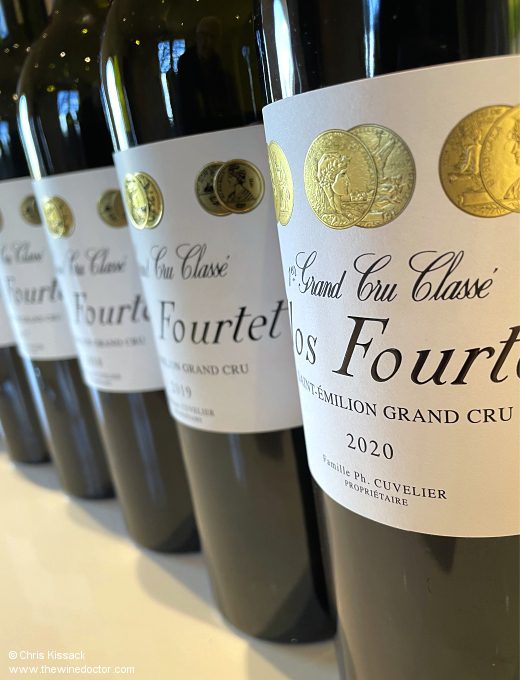Clos Fourtet: The Leperche Family
The estate then came to Marguerite Claudine Rulleau, daughter or perhaps granddaughter to Élie Rulleau, who sometime before 1844 had been married to Émile Leperche. This inheritance is reflected in the next Cocks et Féret published in 1868; not only is the proprietor now a Monsieur Leperche, but the name of the domaine has also changed to the more familiar Clos Fourtet. Their vineyards and wines seem to have impressed the authors who wrote that they considered the domaine to be “one of the best crus of St Emilion” and they helpfully reiterated the military origin of the name.
It was, they wrote, a vineyard of premier quality, with 18 hectares cultivated, land that was planted with the best vines namely “Bouchet, le Merlot et le Noir de Pressac”, the two less familiar names here being local synonyms for Cabernet Franc and Malbec respectively. The wines were said to be highly sought-after, and their quality was reflected by the award of a gold medal in the Exposition Universelle in 1867, among other medals and prizes. These are worth mentioning because it explains the array of gold medals which adorn the label (pictured) even today.
Émile Leperche and Marguerite Claudine Rulleau had at least two children, a son Pierre-Ferdinand and a daughter Marie Pauline. The family continued to look after the vineyard for the next couple of decades, and by 1883 the production was holding steady at 30 tonneaux per annum. Within a few years, however, things had changed; first, the output had contracted from 30 to 20 tonneaux per annum, conceivably the first sign of phylloxera. Second, the vineyard had been divided.

